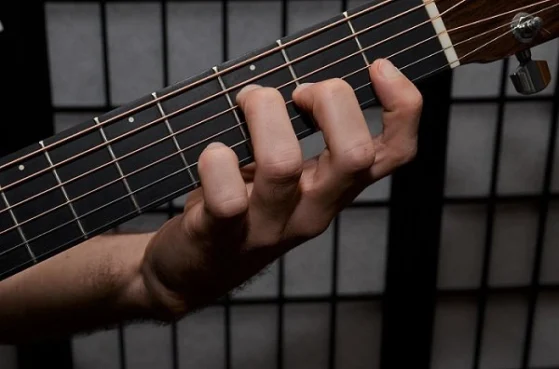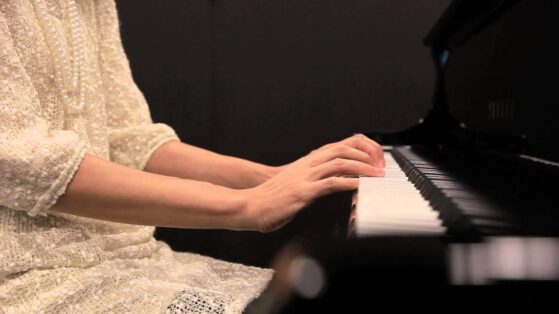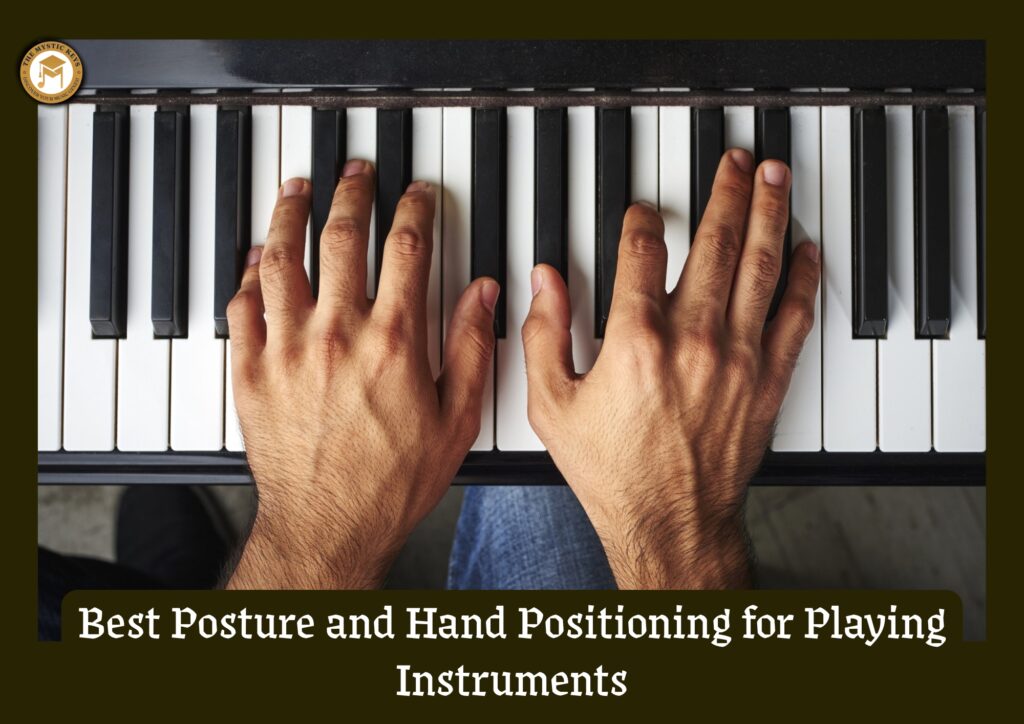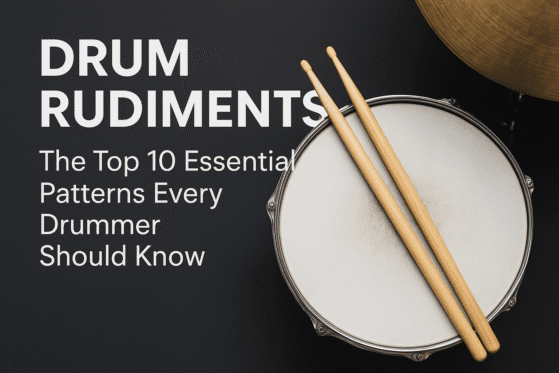The Best Posture and Hand Positioning for Playing Instruments
Playing a musical instrument is a deeply rewarding pursuit, blending artistry, skill, and discipline into a lifelong journey. Whether you’re just starting out or have years of experience, there’s always room for growth. Yet, amidst the focus on technique, repertoire, and expression, many musicians—both beginners and seasoned professionals—often overlook a fundamental aspect that silently shapes their success: proper posture and hand positioning.
This often-neglected foundation does far more than support your playing—it influences everything from your comfort and stamina to the quality of your sound, the precision of your technique, and even your long-term physical health. Without it, progress can plateau, injuries may develop, and expression becomes limited.
That’s why, in this comprehensive blog, we take a closer look at the importance of posture and hand positioning. We’ll uncover why these physical habits matter so much, explore best practices across a range of instruments, highlight common pitfalls to avoid, and share practical strategies to help you develop strong, healthy playing habits that will elevate your musicianship for years to come.

Why Posture and Hand Positioning Matter
Maintaining proper posture and hand positioning isn’t just about looking professional—it directly impacts your performance, comfort, and longevity as a musician. Let’s explore the key benefits:
1. Injury Prevention:
One of the most immediate advantages is reducing the risk of physical strain. Repetitive strain injuries (RSI), tendonitis, carpal tunnel syndrome, and chronic back or neck pain are all too common among musicians. Poor posture can place unnecessary stress on muscles and joints, leading to long-term damage. A well-aligned posture minimizes tension and supports healthier practice habits.
2. Enhanced Technique:
Beyond injury prevention, maintaining good posture and hand positioning also unlocks a host of musical benefits. When your hands and body are properly aligned, you experience smoother, more precise movements. This improved control enhances your ability to shape dynamics, articulation, and speed—empowering you to play with greater refinement and expressive depth.
3. Improved Sound Quality:
Posture doesn’t just affect how you play—it influences how you sound. A relaxed, balanced posture supports better breath control for wind players, more consistent bowing for string players, and fuller tone production across all instruments. Your positioning directly shapes your tone and clarity.
4. Increased Stamina:
Ever feel tired after just a short practice session? Fatigue is often a sign of poor posture. When your body is properly aligned, it distributes physical effort more evenly, allowing you to play longer and more comfortably without tiring quickly. This is why mastering good posture isn’t just about looking poised—it’s essential for endurance and injury prevention, enabling you to fully enjoy your musical journey.
5. Greater Confidence and Expression:
Lastly, when your body feels in control and at ease, your mind follows suit. A strong physical foundation fosters confidence, helping you focus less on discomfort and more on expressing the music freely and passionately.

General Guidelines for Good Posture
Before we dive into the specific posture and hand positioning tips for each instrument, it’s crucial to lay down a few universal principles that apply to all musicians. These core habits form the essential foundation that supports both comfort and technique, no matter what instrument you play.
First, focus on your overall posture:
Whether you’re sitting or standing, aim to keep your spine straight and your body upright. At the same time, stay relaxed—let your shoulders fall naturally back and down. This balance between alignment and ease is key to avoiding unnecessary strain.Next, check your footing:
For those seated, make sure both feet are flat on the floor. This simple habit helps evenly distribute your weight and provides a stable base, allowing for better control over your instrument.Then, bring your attention to your head and neck:
Keep your head level and your neck in a neutral position. Avoid the temptation to lean forward or tilt your head excessively. Your eyes should easily follow your sheet music and your hands without added tension.Now, take a moment to release upper-body tension:
Tension is one of the biggest barriers to smooth playing. Be mindful of your shoulders, arms, and neck—keep them loose and relaxed. This allows your movements to stay fluid and reduces the risk of fatigue.Finally, consider how your instrument is positioned:
Your instrument should feel natural in your hands and close to your body. If you find yourself leaning, twisting, or stretching to reach it, it’s time to adjust. Good instrument placement ensures better posture and more efficient playing.

Hand Positioning | The Key to Fluid Playing
The hands are the primary tools for most instrumentalists, and how you position and move them is crucial for effective playing:
Fingers Curved, Not Flat:
Maintain a natural arch in your fingers. This curvature allows for greater dexterity and fluid motion, whereas flattened fingers tend to cause tension and reduce finger agility.Relaxed Wrists:
A key aspect of healthy hand positioning is maintaining the natural alignment of your wrists. Keep them neutral or just slightly curved—never bent sharply upward or downward—to help prevent stiffness and strain that can build up during extended playing sessions.Proper Thumb Placement:
Depending on the instrument, the thumb serves as a stabilizer or lever. Correct thumb positioning supports finger movement without causing unnecessary tension or restricting flexibility.Finger Independence:
To play with ease and precision, it’s essential to avoid gripping or squeezing your instrument too tightly. Instead, allow your fingers to move freely and independently—this freedom of movement is key to achieving agile and accurate playing.Consistent Hand Height:
Position your hands at a comfortable height relative to the instrument. This alignment helps minimize strain and maximizes reach and control over your playing.

Posture and Hand Positioning for Specific Instruments
1. Piano / Keyboard
When playing the piano or keyboard, posture plays a vital role in both comfort and control. Sit at the edge of the bench with your feet flat on the floor or resting comfortably on the pedals. It’s important to keep your back straight but relaxed, allowing your shoulders to drop naturally. Your elbows should be positioned slightly above the keys to enable fluid movement across the keyboard.
Moving to hand position, your fingers should be gently curved with the fingertips making contact with the keys. The wrist should stay level with the keyboard or slightly elevated to maintain flexibility. It’s crucial to avoid collapsing your knuckles or flattening your fingers, as this can limit dexterity and cause tension.
Common mistakes to watch out for include slouching, letting your wrists drop below the keyboard level, or overextending your fingers, which can all hinder your playing technique.
2. Guitar / Bass
Transitioning to guitar or bass, maintaining a solid yet relaxed posture is equally essential. Sit upright with the guitar resting comfortably on your thigh—the right thigh for right-handed players. To keep the instrument stable, use a footstool or a strap adjusted to a comfortable height. Avoid slumping or leaning forward, which can create tension and affect your playing endurance.
For the left hand, the thumb should rest gently behind the neck, roughly midway, providing support while your fingers curve naturally and press the strings close to the frets for clean notes. On the right hand, if you’re fingerpicking, keep your wrist relaxed with fingers curved. When using a pick, hold it loosely between your thumb and index finger to maintain control without stiffness.
Be mindful of common pitfalls such as collapsing your thumb over the neck, tensing your wrists, or gripping the neck too tightly, all of which can restrict finger movement.
3. Violin / Viola
Next, for violin and viola players, posture is key to producing a rich tone while avoiding discomfort. Whether standing or sitting, keep your back straight and shoulders relaxed. The violin should rest on your collarbone, supported lightly by your jaw and chin. It’s important not to hunch your shoulders, as this can limit bow movement and cause strain.
Regarding the left hand, the thumb gently supports the neck from underneath while the fingers curve naturally over the fingerboard. The wrist should remain relaxed and flexible. For the right hand, hold the bow lightly but firmly, with a flexible wrist and curved fingers to allow smooth, controlled bowing.
Watch for mistakes such as raising your shoulders, gripping the bow too tightly, or using a stiff wrist, which can all hinder your playing fluidity.
4. Flute / Woodwinds
For flute and other woodwind instruments, a tall and relaxed posture is crucial. Whether sitting or standing, keep your shoulders down and back, avoiding tension. Hold the instrument horizontally with your elbows slightly away from your body to allow natural breathing and ease of finger movement.
Your hand position should involve naturally curved fingers resting over the keys. Avoid collapsing your fingers or keeping them too straight, as either can limit dexterity and speed.
Common errors include slouching, raising the shoulders toward your ears, and stiff finger movements, all of which can negatively affect tone and endurance.
5. Drums / Percussion
Finally, drummers and percussionists must pay attention to posture to maximize power and precision while minimizing fatigue. Sit firmly on the drum throne with your feet flat on the floor, maintaining a straight but relaxed back. Arrange your drums and cymbals so that you can reach them comfortably without overstretching or leaning excessively.
In terms of hand position, hold your sticks or mallets with a relaxed grip that offers control while allowing flexibility in your fingers and wrists.
Beware of common mistakes such as gripping sticks too tightly, leaning forward, or raising your shoulders, as these habits can lead to tension and reduce your playing effectiveness.

Common Posture and Hand Positioning Mistakes to Avoid
Even with the best intentions, many musicians unknowingly fall into habits that hinder both their progress and physical well-being. Recognizing these common pitfalls is the first step toward improvement. Here are some of the most frequent posture and hand positioning mistakes—and why it’s crucial to avoid them:
Slouching or hunching over: This is a frequent issue, especially during long practice sessions. Poor spinal alignment leads to back and neck pain and can also restrict your breathing, limiting both comfort and sound quality.
Locked elbows or wrists: Often a result of tension or overcompensation, this stiffness interferes with natural movement and fluid technique, making even simple passages harder to execute cleanly.
Flat fingers or collapsed knuckles: This habit can reduce finger agility and compromise strength. Curved fingers provide better contact and control, especially on stringed and keyboard instruments.
Over-gripping: Holding your instrument—or bow, stick, or pick—too tightly leads to rapid fatigue and inhibits finger independence. A lighter, more relaxed grip allows for greater speed and precision.
Twisting or leaning unnaturally: Frequently caused by poor setup or positioning of the instrument, this misalignment puts strain on your spine and muscles, increasing the risk of long-term pain or injury.
By becoming aware of these pitfalls and correcting them early, you’ll build a stronger foundation for safe and expressive playing.

Tips to Improve Your Posture and Hand Positioning
Improving your posture and hand positioning requires attention and consistent effort. To guide you along the way, consider the following strategies:
Begin by observing yourself closely. Using a mirror or recording your practice sessions provides valuable visual feedback, allowing you to spot and correct subtle bad habits that might otherwise go unnoticed.
Building on that awareness, it’s crucial to take regular breaks. Every 20 to 30 minutes, pause to stretch and reset your posture. This simple habit helps prevent fatigue and keeps your muscles fresh throughout your practice.
Before diving into intense playing, make sure to warm up properly. Engaging in exercises that increase flexibility and blood flow to your fingers, wrists, and arms prepares your body and reduces the risk of strain.
To deepen your understanding, seek professional guidance whenever possible. A qualified teacher or physical therapist can offer personalized advice and help you make corrections tailored to your unique needs.
Alongside expert input, practice mindful playing daily. Continuously check in with your body as you play, noticing any tension or discomfort and adjusting your posture and hand position accordingly.
Complement these habits by strengthening your core muscles. A strong core supports better posture and endurance, enabling you to play comfortably for longer periods.
Lastly, consider incorporating ergonomic tools into your setup. Adjustable benches, footstools, and instrument supports can enhance your comfort and alignment, making a noticeable difference in your overall technique.

Conclusion
Mastering an instrument involves much more than simply learning notes and rhythms. At its core, it requires a mindful connection between your body and your instrument—a connection that begins with proper posture and hand positioning. By cultivating these good habits early on, you not only elevate your musical technique and sound but also protect your body from strain and injury, setting the stage for a long and joyful musical journey.
No matter what instrument you play—be it piano, guitar, violin, or any other—the foundation of your progress lies in these physical fundamentals. Prioritizing them helps unlock your full potential and makes playing more comfortable and sustainable over time.
Remember, great music flows most naturally when it comes from a relaxed, balanced body paired with hands that move with precision and ease. If you’re looking for expert guidance on developing these essential skills, consider joining The Mystic Keys—an online music academy dedicated to helping musicians of all levels build strong technical foundations, improve posture, and master hand positioning through personalized lessons and support.
Related Blogs
How to Transition from Sheet Music to Improvisation on the Piano?
For many pianists, especially those trained in classical or formal settings, playing from sheet music is a foundational skill. It teaches accuracy, discipline, and an understanding of musical notation.
The Best Guitar Effects and Pedals for Beginners
Guitar pedals and effects are essential tools that open up an entirely new world of sound possibilities. They can transform a simple, clean guitar tone into something rich, expressive, and uniquely your own.
When it comes to singing, smoothness and fluidity can elevate a performance to new heights. One of the key techniques used by vocalists to achieve seamless transitions between notes is the pitch glide.








